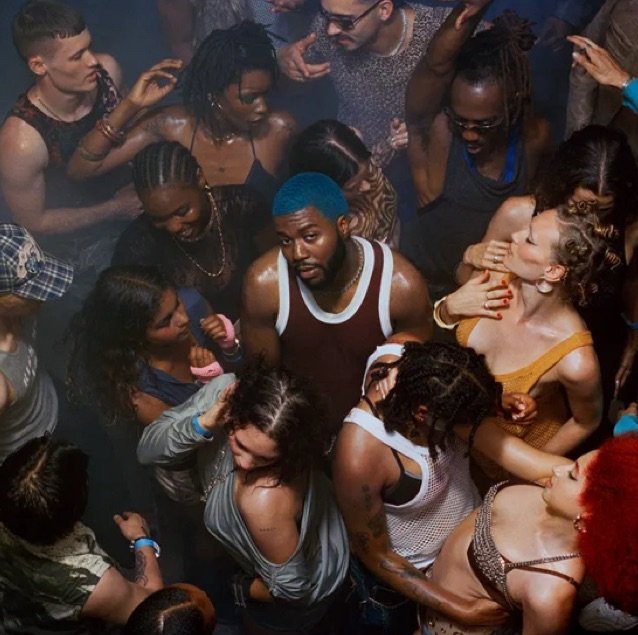
There’s a special kind of alchemy that occurs when a filmmaker finds a specific creative niche that is entirely their own and works within for an uninterrupted run of films. It’s an incandescent form of inspiration and creativity, the kind you know immediately when you see it. You can practically feel it radiating off of every fiber of the film and know: this artist has found their tribe. Whether it be through collaborating with the same crew, same actors, or same studio, a filmmaker being able to settle into a groove and dive even deeper into their own eccentricities and idiosyncrasies in such fashion is always a net-positive.
We’ve seen this with Alfred Hitchcock at the end of ‘50s into the ‘60s (making Vertigo, North by Northwest, and Psycho in back-to-back-to-back years), John Carpenter at the end of the ‘70s into the ‘80s (Halloween, The Fog, Escape from New York, and The Thing all stacked over the course of four years), Francis Ford Coppola in 1974 (making The Conversation and The Godfather Part II, two of the greatest films of all time, in the same year), or Mel Brooks also in 1974 (making Blazing Saddles and Young Frankenstein, two of the other greatest films of all time). These kinds of runs are true cinematic treasure troves.
Yorgos Lanthimos’ new film, Kinds of Kindness, is hitting theaters just months after Lanthimos’ Poor Things was released to financial success and critical acclaim. Kinds of Kindness sees Lanthimos reteaming with almost all of his Poor Things collaborators both behind and in front of the camera, but utilizing these creative relationships to explore entirely different kinds of depths. The result is a phenomenally funny, often deeply moving tale of the strangeness and otherness inherent to humanity and its relationships that is able to make the minute feel monolithic in profound ways. Kinds of Kindness is like The Twilight Zone by way of Franz Kafka, and it’s deliriously delightful.
TOP FIVE OF “KINDS OF KINDNESS”
5. The Audio Experience
The combined talents of musician/composer Jerskin Fendrix and sound designer Johnnie Burn turn the audio experience of Kinds of Kindness into an immersive and invasive experience all its own.
Fendrix, the same composer who delivered such articulate and boundlessly inventive work for Lanthimos’ Poor Things, creates a score that is similarly brilliant but aesthetically and sonically distinct. For this film, Fendrix constructs the score using sparse piano arrangements and occasional bursts of choral accompaniment. The results pair exquisitely with Lanthimos’ visuals, crafting an unnerving sense of synchrony. It’s also incredibly funny at times, with choral bursts accentuating the lunacy of the film’s most insane moments or incessantly repeating piano motifs adding weight to the physical movements within the frame. It frequently evokes Jocelyn Pook’s hauntingly mesmerizing piano-based score for Stanley Kubrick’s Eyes Wide Shut, in powerful ways.
In conjunction with this, sound designer Johnnie Burn, known for his all-encompassing audio experiences in films like Jordan Peele’s Nope and Jonathan Glazer’s The Zone of Interest, painstakingly carves out a bold, unique, and thoroughly motivated sound for Kinds of Kindness. His work here reminded me of Martin Scorsese’s Raging Bull, with entire layers of sonic textures being removed at key moments of action. The result is disorienting and incisive, slicing past the peripheral and deeper into the interior worlds of these characters. It is genuinely remarkable, a true artistic achievement in sound, and I cannot recommend experiencing it in a theater enough.
4. The Storytelling and Structure
Kinds of Kindness is an anthology of sorts, telling three different stories within its runtime, each divided by their title and end credit sequences. While they are all connected by larger themes, motifs, and driving artistic principles, this is essentially like getting three short films from Lanthimos and co., back-to-back-to-back. As such, Kinds of Kindness serves as a powerful showcase of Lanthimos and frequent co-writer Efthimis Filippou’s remarkable discipline in storytelling and structure.
On the surface, the stories in Kinds of Kindness are absurd, each taking a unique approach to genre fare and running with it in fascinating ways. Yet, each story is rooted in emotional honesty, making them feel presciently vulnerable to a frequently discomforting degree. These are modern fables or parables: tales whose greatest lunacy lies in how well they authentically capture haunting and human experiences that cannot be articulated with words alone.
Despite each story running about an hour, Lanthimos and Filippou make every second of screen time count. The ways in which even the most minute details serve as setups for bigger payoffs, and how seemingly asinine pieces of dialogue or incongruous character choices blossom into some of the film’s most satisfying moments, are genuinely incredible. While some might accuse Kinds of Kindness of being self-indulgent for its runtime and content, it’s evident that nothing this meticulously structured and methodically constructed could honestly be called indulgent.
3. Emma Stone
Just a few short months ago, Emma Stone won an Academy Award for her miraculous performance as Bella Baxter in Poor Things. Now, in Kinds of Kindness, Stone reteams with Lanthimos to explore vastly different artistic territories for both of them, threefold. In each of the film’s acts, Stone plays entirely different characters, and each performance feels completely and wholly removed from the last.
All of the actors are genuinely incredible throughout (I especially loved both Willem Dafoe and Hong Chau, who each get to stretch themselves across the three performances in spectacular fashion), and the act of having them all play different characters in each piece of the film lends an unexpected creative verve. This sense of creatively-minded chaos and freedom really works within the film’s profusely calculated tonal shifts. Having an actress like Stone is invaluable; she can sell literally any emotion while also subtextually highlighting the recurring themes and motifs across all three stories.
Additionally, it just needs to be said, Stone delivers an elongated monologue at one point during the film about a world in which dogs are humans and humans are dogs. It is so inherently ridiculous, yet she sells it with such gravitas that one could swear it was Shakespeare. It is both hysterical and awe-inspiring.
2. Jesse Plemons
For as fantastic as the entire cast of Kinds of Kindness is, the most revelatory performance comes in the form of Jesse Plemons’ work. Plemons has long been a favorite of mine, a performer who just shows up and delivers routinely unforgettable work across basically every genre. Here, Kinds of Kindness serves as a perfect vessel to underscore the sheer range and emotional tenacity that Plemons brings to every role. Each of his three performances is so great, so full of such quiet and minute touches that Plemons uses to define the very essence of these tragically lost men.
Between the three characters, there are small physical changes made to Plemons’ appearance (haircuts, mustaches, etc.), but it is truly a testament to the actor’s work just how much these characters all become such defined creations in their own right. It’s really incredible work and the kind that deserves acclaim and acknowledgment. As one of the largest new additions to this creative team that wasn’t in Poor Things, Plemons acts as Lanthimos’ muse here, challenging and captivating the director’s camera in equal measure, and it’s incredible to see. Here’s hoping to see a lot more of Plemons in Lanthimos’ future films.
1. Yorgos Lanthimos’ Direction
Yorgos Lanthimos had a defined visual style that carried him across several films, characterized by gregariously expanded frames, deep focus, and fish-eye lenses. In this writer’s opinion, that formal style had served him quite well in films like The Favourite, but reached its height in Poor Things, where Lanthimos and cinematographer Robbie Ryan brilliantly weaponized these visual facets to represent Bella Baxter’s evolving view of the expansive world beyond the walls of her home. So, I was incredibly interested to see how Lanthimos would follow up what I saw as a magnum opus of this specific visual style. The answer is to do something entirely different.
Gone are the fish-eye lenses, and in their place is a visual style that still feels undeniably, profoundly Lanthimos-ian. Working once again with Robbie Ryan and editor Yorgos Mavropsaridis, Kinds of Kindness moves and feels like a Lanthimos film to an almost comical degree, with some of the most tragic material he’s ever put onscreen and some of the funniest material he’s ever put onscreen being treated with equal reverence. There were many times throughout the film that the distilled potency of Lanthimos’ visual style reminded me of Mario Bava’s work on his own anthology film, Black Sabbath. By tackling these vast and wide-ranging stories, you get a real masterclass of Lanthimos’ visual priorities and motivations, making the work all the more resonant.
The way Lanthimos and his team took sparse, intimate settings (a significant departure from the elaborate science-fiction and horror sets of Poor Things) and made them feel so mundane was a real treat, accentuating the lunacy unfolding within them. Additionally, the way Lanthimos’ frame would deliberately dissect those within its gaze, honing in on specific elements of an individual’s features (hands, lips, feet, the muscles beneath Emma Stone’s nostrils) to the point that they became almost unrecognizable, is such a brilliant visualization of the film’s larger themes. I also found the staging of the film and the way Lanthimos would deliberately break the line mid-conversation in such starkly motivated fashion to be incredibly effective and articulate.
RGM GRADE
(A)
Overall, Kinds of Kindness is just fantastic cinema. I have no doubt that it will have vocal detractors, people who find its non-coalescing narrative frustrating rather than inspiring. Personally, I found the film’s exuberance at thumbing its nose in the direction of any sense of ‘plot’ to be invigorating. The thematic ties and implications between the three separate stories were far more satisfying and thought-provoking than any overt narrative ties could have ever been. All of this to say, Lanthimos is riding on a creative high, and the choice to dive straight from Poor Things (arguably the most fantastical of any of his films) into Kinds of Kindness (a film overtly about the lunacy of everyday reality) was an ingenious one that we now all get to reap the benefits of.
Discover more from RATINGS GAME MUSIC
Subscribe to get the latest posts sent to your email.










